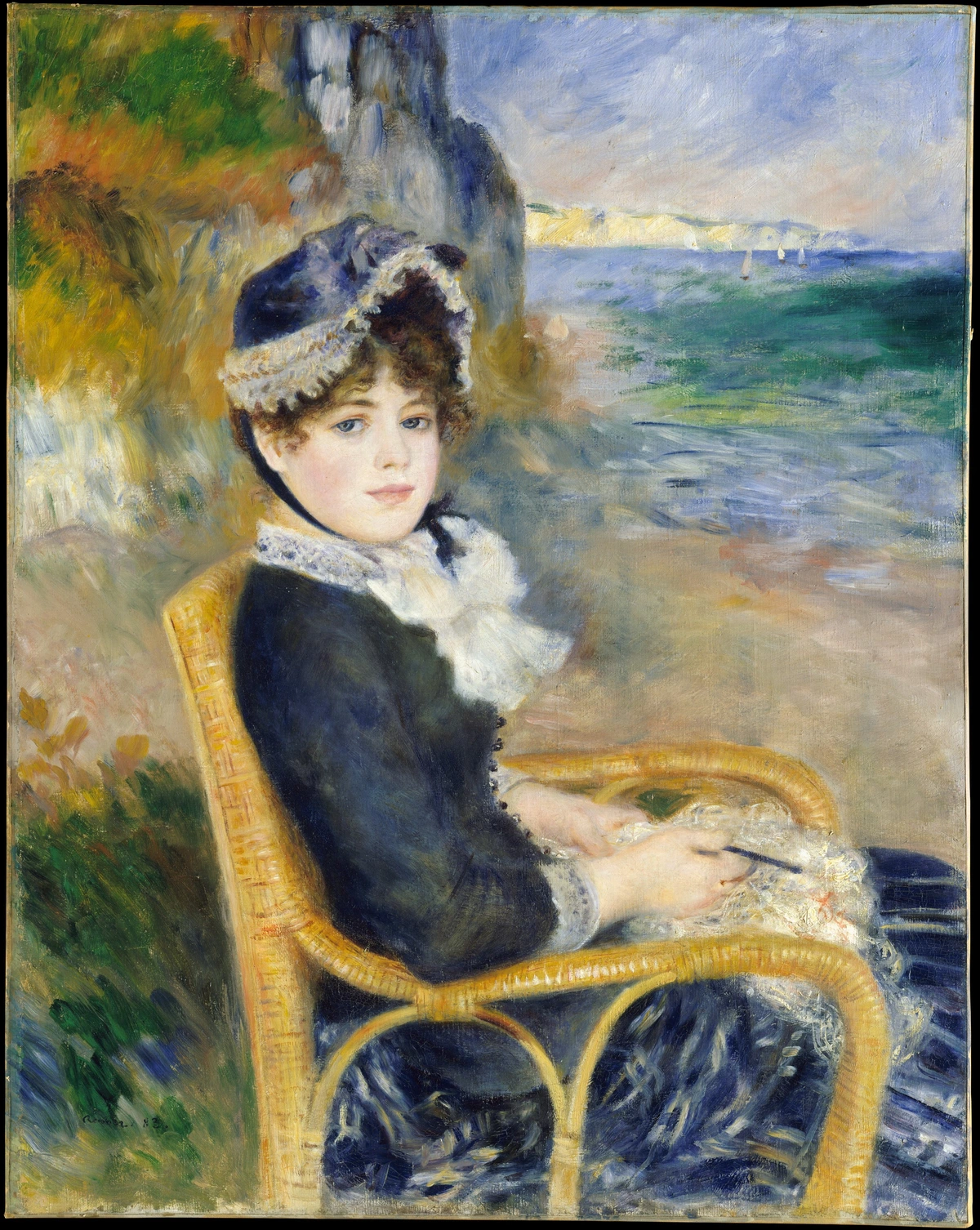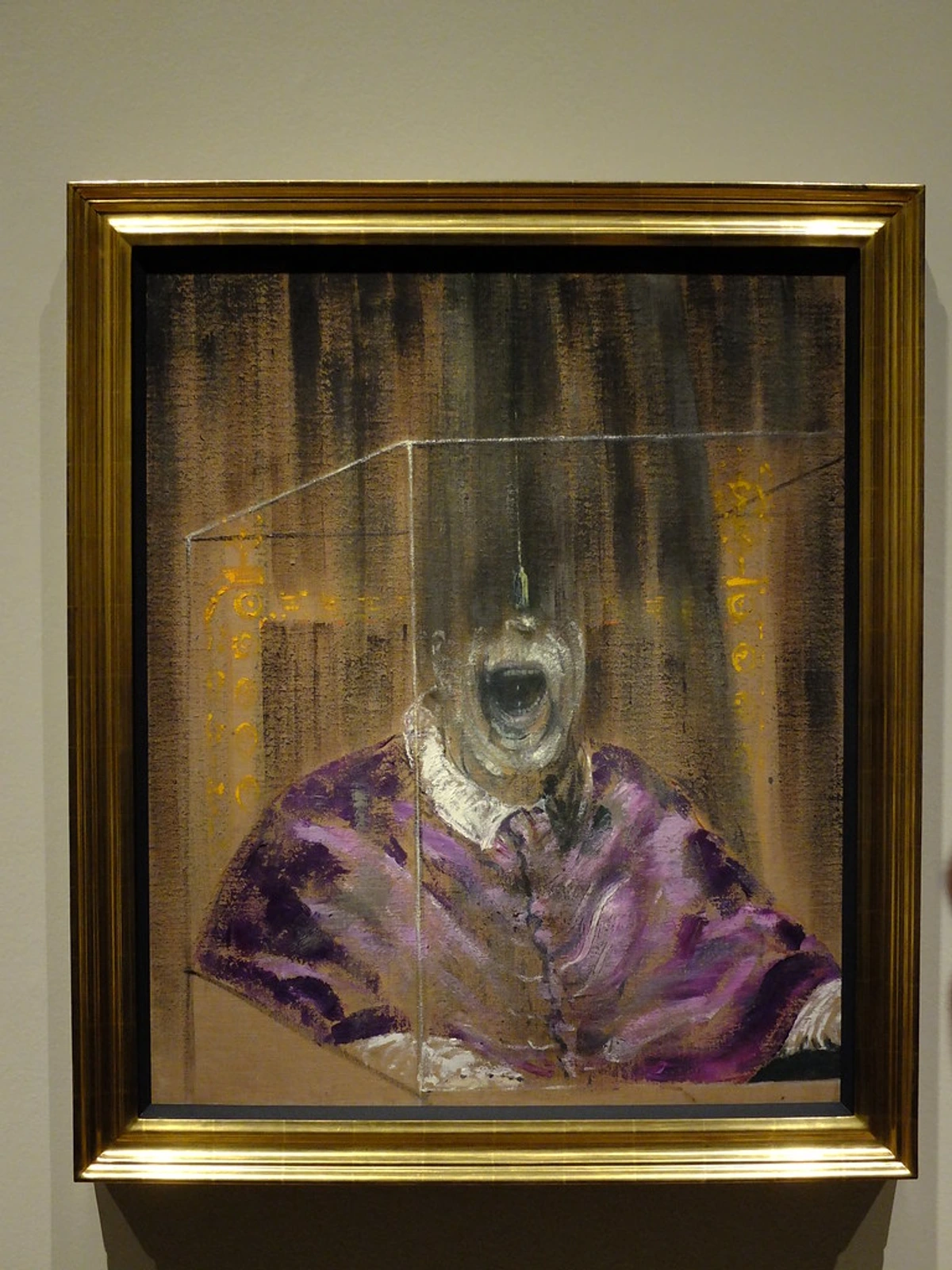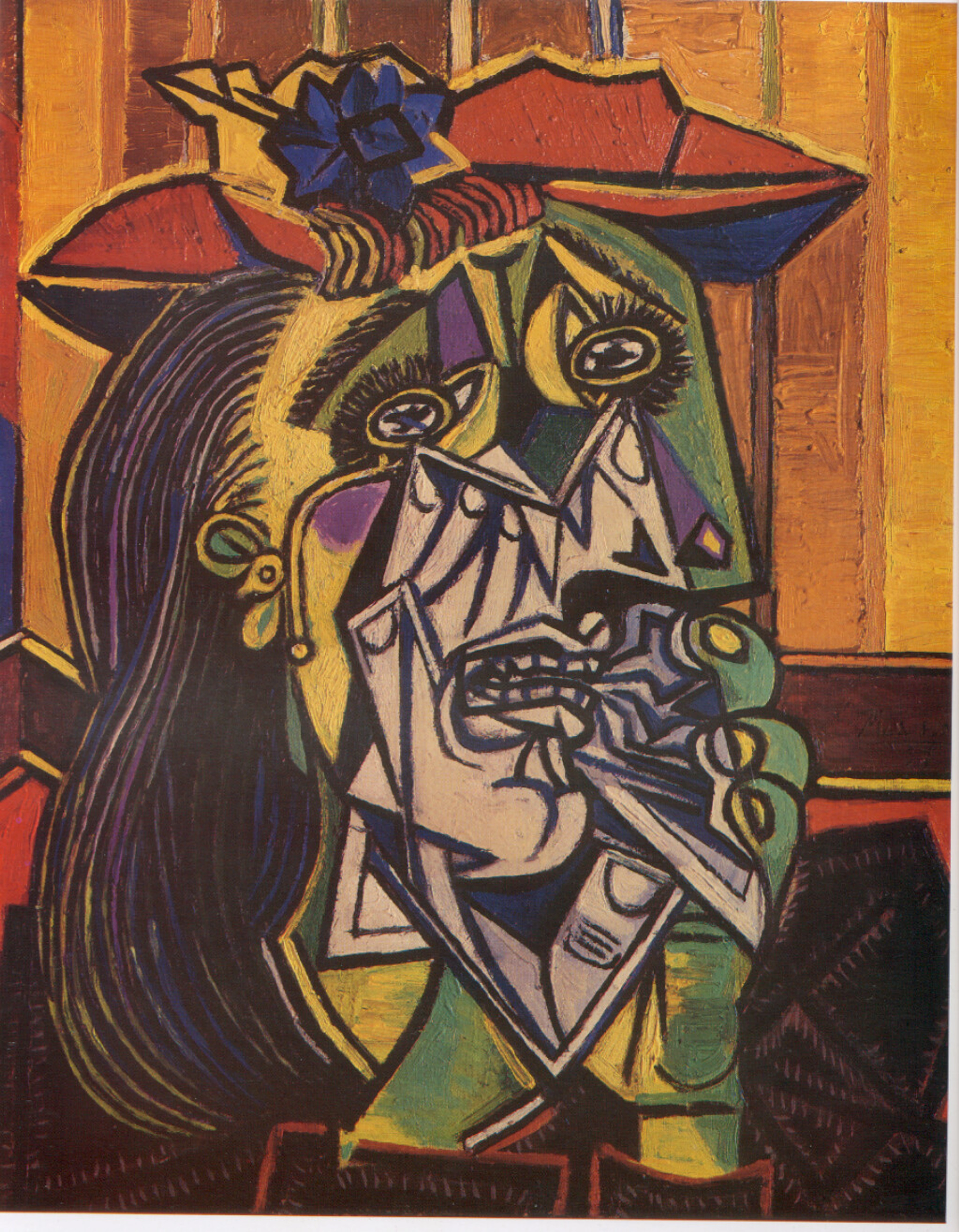
Gustav Klimt's The Kiss: An Artist's Deep Dive into Its Golden Symbolism, History, and Enduring Legacy
As an artist, I intimately explore Gustav Klimt's 'The Kiss' – its revolutionary golden phase, intricate symbolism, fin-de-siècle Viennese context, and profound impact on modern art. Discover why this masterpiece continues to captivate hearts globally.
Gustav Klimt's The Kiss: An Artist's Deep Dive into Its Golden Symbolism, History, and Enduring Legacy
As an artist myself, I'm drawn to artworks that possess a certain magnetism, a visual gravity that pulls you in and never quite lets go. Gustav Klimt's The Kiss is precisely that kind of masterpiece for me. It’s more than just a painting; it's an immersive experience, a shimmering, golden embrace that has fascinated me and countless others for over a century. Every time I gaze at it, I find a new detail, a new layer, a new question. What is it about certain artworks that lodge themselves so deeply in our consciousness, demanding our constant return? This is my attempt to unpack just that for this extraordinary work. In this ultimate guide, we'll delve into the multifaceted genius of Gustav Klimt's The Kiss, exploring its golden symbolism, rich historical context, artistic techniques, and enduring legacy. It’s a journey I’m thrilled to share with you, offering a deep dive that goes beyond the surface to uncover why this painting continues to captivate hearts and minds across generations.

Seriously, what is it about this piece that makes it so utterly captivating? Is it the overwhelming use of gold? The tender, almost desperate clinch of the lovers? The sheer opulence of its symbolism? For me, as an artist, this is where the real work begins – peeling back those shimmering layers to really dig into what makes this masterpiece tick, exploring its historical roots, its philosophical undertones, and the profound impact it continues to have. Consider this your ultimate guide, where I'll share everything I've learned and pondered about this golden marvel.
Key Facts & Timeline: A Quick Reference for the Masterpiece
Before we dive deep, here are some essential facts about this incredible artwork, a quick reference for anyone, like me, who loves a good timeline:
- Artist: Gustav Klimt (Austrian, 1862-1918)
- Title: The Kiss (German: Der Kuss)
- Date: 1907-1908
- Medium: Oil and gold leaf on canvas
- Dimensions: 180 cm × 180 cm (approx. 71 in × 71 in) – it’s a substantial square!
- Location: Österreichische Galerie Belvedere, Vienna, Austria
- Key Movements: Art Nouveau (specifically Vienna Secession), Symbolism, Golden Phase
Brief Timeline:
- 1862: Gustav Klimt born near Vienna.
- Late 1880s - 1890s: Klimt begins his career as a successful academic painter, creating allegorical murals for public buildings like the Burgtheater and the University of Vienna, often adhering to a more traditional, naturalistic style. It’s a side of his work that sometimes surprises people!
- 1897: Klimt co-founds the Vienna Secession, rebelling against traditional art. This marks a radical departure, a bold step towards what would become his distinctive voice.
- 1903: Klimt travels to Ravenna, Italy, and is profoundly influenced by the Byzantine mosaics, sparking his intensive use of gold leaf.
- 1907-1908: Klimt paints The Kiss during his Golden Phase, a period defined by unparalleled opulence and symbolic depth.
- 1908: The Kiss is first exhibited and acquired by the Austrian state for an unprecedented sum, a testament to its immediate power despite initial controversy.
- 1918: Gustav Klimt dies in Vienna.
Vienna at the Turn of the Century: The Crucible of Klimt's Vision
To truly appreciate "The Kiss," we need to set the scene, and for this painting, that scene is Vienna at the turn of the 20th century. And believe me, context is everything. For me, as an artist, understanding the environment that birthed a masterpiece is crucial. The Kiss was painted by the Austrian Symbolist painter Gustav Klimt between 1907 and 1908, right at the peak of his so-called "Golden Phase." It depicts a couple embracing, intertwined, at the edge of what appears to be a flower-strewn precipice, bathed in an almost divine golden aura.
But to truly understand this painting, we need to step back into the vibrant, yet turbulent, intellectual and artistic ferment of Vienna. This wasn't just a city; it was a crucible of new ideas, grappling with rapid modernization, the groundbreaking theories of Sigmund Freud, and philosophical currents from figures like Arthur Schopenhauer and Friedrich Nietzsche. It was also home to profound literary figures like Karl Kraus, whose biting satire challenged societal hypocrisy, and Ludwig Wittgenstein, whose philosophical inquiries redefined language and logic. In the musical realm, composers like Gustav Mahler and Arnold Schoenberg pushed the boundaries of tonality and structure, creating a soundscape as revolutionary as Klimt's visuals. This intellectual backdrop, questioning societal norms and delving into human psychology, provided fertile ground for Klimt's exploration of emotional and symbolic themes. It was a true fin-de-siècle moment – a term literally meaning "end of the century," but signifying a period of profound cultural pessimism, decadence, anxiety, and exhilarating artistic possibility. Old certainties were giving way to radical new ways of thinking and seeing, a tension perfectly encapsulated in Klimt’s work. This era saw the decline of the Austro-Hungarian Empire, rising nationalism, social upheaval from industrialization, and growing antisemitism – all contributing to a collective unease beneath the city's glittering surface. How does one find solace or beauty amidst such upheaval? Perhaps, as Klimt suggests, through the enduring power of human connection, a feeling I often grapple with in my own work: how to convey hope or beauty amidst contemporary turbulence.
Klimt was a leading figure in the Vienna Secession movement, which formed in 1897. This wasn't just an art group; it was a rebellion, a radical departure from the conservative, academic art establishment. The Secessionists, including Klimt, sought to challenge conventional norms, advocating for "artistic freedom" and the concept of Gesamtkunstwerk – a "total work of art" that integrated all art forms (painting, architecture, design, even performance) into a cohesive, meaningful whole. For instance, the Secession Building itself, designed by Joseph Maria Olbrich, was a Gesamtkunstwerk, where everything from the architecture to the furniture and even the exhibitions were meticulously unified. This was a direct challenge to the traditional hierarchy of the arts, aiming to create holistic artistic experiences. They actively rejected the historical and allegorical painting favored by the academy, preferring to explore modern psychological and emotional themes. I often wonder what it must have felt like to see something so utterly new and challenging hanging on a gallery wall back then. It was a time when art was pushing boundaries, much like the artists discussed in this ultimate guide to expressionism were doing around the same time.
It’s a prominent example of Art Nouveau (or Secession style, as it was known in Vienna), a movement I've always found incredibly alluring due to its organic, flowing lines and decorative flair – a deliberate move away from rigid academic realism towards something more expressive and symbolic. Think of Art Nouveau as the larger artistic movement, and the Vienna Secession as its unique Austrian expression, characterized by a blend of flowing organic lines and more geometric forms, often with a deeper intellectual and philosophical undercurrent. If you're keen to explore more about movements like this, you might enjoy this art nouveau movement or a closer look at the vienna secession: art nouveau's radical austrian cousins – it's fascinating to see the connections! Sometimes, the greatest beauty lies in the breaking of old rules.
Klimt's Golden Phase: An Alchemical Transformation of Art
Klimt's Golden Phase is really something special. It's characterized by the rich, opulent use of gold leaf, a technique that draws on Byzantine mosaics and Egyptian art – talk about reaching back through history! I can't help but think about how artists like Klimt constantly draw inspiration from the past, just as we today look back at his work. This blend of ancient craftsmanship with modern sensibility was a revolutionary act in itself. Specifically, he borrowed the Byzantine tradition of using flat, gold backgrounds to create a sense of divinity and an otherworldly realm, elevating his figures beyond mere mortals, placing them in a sacred context usually reserved for religious icons. From Egyptian art, he took the flattened, ornamental quality and the use of hieratic poses (stylized, often stiff postures that convey solemnity and timelessness), giving his subjects a timeless, almost ritualistic presence. This wasn't just aesthetic; it was a profound way to imbue his secular subjects with a spiritual weight, modernizing ancient techniques to make a powerful statement about human emotion. Beyond these, his work also shows an influence from Japonisme, particularly in the flat, decorative patterns and the asymmetry found in Japanese woodblock prints, which were widely collected in Vienna.
There's an almost alchemical transformation happening when gold leaf is applied – it doesn't just add color, it adds a divine presence, a luminosity that paint alone can't replicate. Klimt, a true master, seemed to harness an almost alchemical process, transforming base canvas into a shimmering, transcendent vision. His contemporaries, fascinated by esoteric traditions and the mystical, might have seen this as more than mere technique; it was an attempt to fuse the material with the spiritual, echoing the quest of alchemy itself: to transform the mundane into the sacred. In my own studio, when I'm layering colors in my abstract art to evoke a certain glow, I often think of Klimt's patient, intentional alchemy, turning simple pigment into something that pulses with inner light.

If you're curious about how older art movements influenced later ones, take a look at the influence of byzantine art on renaissance painting. It’s a great example of how art dialogues across centuries. And while the Golden Phase, exemplified by 'The Kiss,' is perhaps his most iconic, Klimt's artistic journey spanned various periods, moving from monumental academic murals to the highly decorative and symbolic styles that defined his mature work. His evolution from a respected but conventional academic painter to the rebellious Secessionist, and finally to the master of the Golden Phase, demonstrates a relentless pursuit of new forms of expression. This journey, from early naturalism to the radical stylization of The Kiss, is a testament to an artist constantly pushing boundaries.
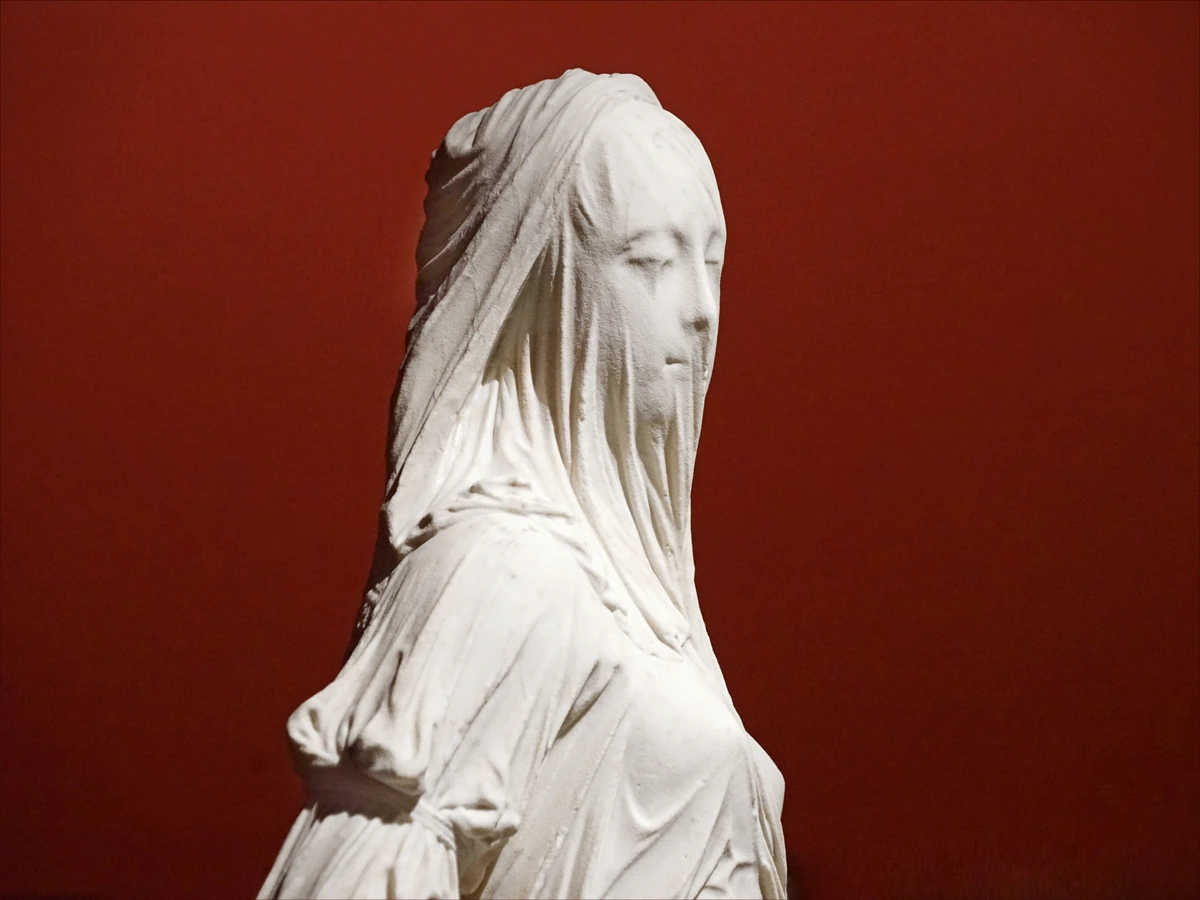
This period wasn't just about the gold; it was about the profound symbolism infused into every shimmering square and spiral, and a masterful integration of two-dimensional decorative patterns with three-dimensional figurative elements. Klimt was experimenting with flatness and depth, using intricate ornamentation to both adorn and define his subjects, often blurring the lines between figure and background. It's a compositional genius that still blows my mind. I often marvel at the sheer patience and skill required to apply gold leaf; it feels like a form of alchemy, transforming the canvas into something sacred.
When I look at other works from this phase, like the Portrait of Adele Bloch-Bauer I, I see the same dedication to intricate pattern and emotional depth, but also a bold embrace of abstract decorative forms that push beyond mere representation. That portrait, much like The Kiss, became an icon in its own right, later gaining notoriety through its complex history of Nazi looting and eventual restitution, further cementing Klimt's work in the annals of history, beyond just its artistic merit. Beyond 'The Kiss,' Klimt's oeuvre includes other iconic works that showcase his mastery. Consider the seductive Judith I, which portrays a powerful, assertive female figure, a stark contrast to the yielding woman in 'The Kiss,' offering another facet of his exploration of sensuality and power. Then there’s the poignant The Three Ages of Woman, which explores the human life cycle, providing a broader, more allegorical scope than the intimate focus of The Kiss while still employing his characteristic symbolism.

The reception to "The Kiss" when it was first exhibited at the 1908 Kunstschau in Vienna was a mix of awe and bewilderment. Many found its opulence breathtaking, even divine, while others, accustomed to more conventional art, were discomfited by its radical stylization and overt sensuality. Imagine the scandal! What was scandalous then is now, dare I say, a must-see attraction! Yet, it was immediately acquired by the Austrian state for the Belvedere Museum for an unprecedented sum, signifying its undeniable power and importance even amidst controversy. This immediate acquisition, despite the mixed reviews, speaks volumes about its perceived significance right from the start, a true testament to its artistic power and the shifting tides of the art world.
Artistic Technique and Materiality: Beyond the Golden Sheen
While the gold leaf is undeniably the star, Klimt's genius in "The Kiss" extends to his meticulous technical execution and choice of materials. His approach to painting was multi-layered and experimental, blending fine art with decorative craft. The sheer patience required to apply gold leaf, the meticulous planning for such a complex composition – it resonates deeply with the challenges I face when layering colors and forms in my own abstract pieces. It's a reminder that behind every seemingly effortless masterpiece, there's a profound dedication to craft.
- Canvas Preparation & Studies: When I think about Klimt's process, I can't help but imagine him in his studio, meticulously preparing his canvases. This often involved multiple layers of gesso, not just to create a smooth, durable surface, but also to ensure the painting’s radiant luminosity and longevity by providing an ideal ground for the subsequent layers of paint and gold leaf. While specific sketches for The Kiss are not widely known, Klimt was renowned for his extensive preparatory drawings for other works, meticulously studying poses and compositions. This suggests a similar rigorous approach for this masterpiece, with countless hidden studies informing the final, seemingly effortless embrace. I think about my own charcoal drawings, where every line is a decision, building towards a final form.
- Layering of Materials & Textural Play: Klimt didn't just apply gold leaf flat. He often combined it with oil paints, silver, and even platinum dust to create a complex, shimmering surface. The careful burnishing of the gold leaf, for instance, creates areas that gleam with an almost liquid brilliance, while other areas retain a softer, matte sheen, adding a dynamic texture that seems to pulse with light. Imagine the precision required, carefully applying various types of adhesive (like bole or gesso) before meticulously laying down fragile gold sheets, then burnishing areas with agate tools for varied lusters while leaving others untouched for a contrasting, almost fabric-like texture. This layering allowed for different metallic lusters and textures, giving the gold an almost living quality that shifts with the light. It's a technical ballet of materials!
- Intricate Line Work: Beneath and within the patterns, Klimt's precise draftsmanship is evident. His fine lines define the contours of the figures and the intricate details of their robes, creating a powerful graphic quality that underpins the decorative elements. This linearity is a hallmark of Art Nouveau.
- Two-Dimensionality Meets Three-Dimensionality: Klimt masterfully blurs the lines between figure and background. The bodies of the lovers, particularly their faces and hands, retain a three-dimensional, almost sculptural quality, while their robes and the background are flattened into ornamental patterns. This masterful interplay between sculptural form and flattened pattern isn't just visually striking; it elevates the figures, making their earthly embrace feel simultaneously tangible and divine, existing in a space beyond ordinary reality. This contrast draws the eye and emphasizes the sacred, iconic nature of the embrace.
- Subtle Color Palette: Beyond the dominant gold, the background's subtle greens, blues, and purples, along with the vibrant floral accents, are applied with great care. These colors provide depth and a naturalistic grounding to the ethereal golden figures, preventing the painting from becoming a mere decorative object. They hint at a fleeting paradise, a moment stolen from a larger, perhaps less certain, world.
This blend of traditional painting techniques with innovative material application and decorative arts principles is what truly sets "The Kiss" apart as a masterpiece of modern art.
The Lovers in 'The Kiss': Identity, Ambiguity, and Universal Appeal
So, who are these two wrapped in gold? While Klimt himself rarely confirmed the identity of his sitters – a deliberate choice to enhance the painting's universal appeal – art historians widely believe the man in The Kiss to be Klimt himself and the woman to be his long-time companion, the fashion designer Emilie Flöge. This isn't just a guess; there are striking similarities between the female figure and other portraits of Emilie, particularly her distinct facial structure and often depicted prominent red hair, and the male figure bears a strong resemblance to Klimt, particularly his beard. Some scholars, however, have also proposed other models, such as the dancer Adèle Bloch-Bauer, or even anonymous figures to emphasize the painting's universal message, though the Klimt-Flöge theory remains the most widely accepted due to compelling visual and biographical evidence.
Emilie Flöge was not just Klimt's muse; she was a pioneering fashion designer and businesswoman in Vienna, running a progressive couture salon with her sisters. Her designs were bold, reformist, and often featured loose, flowing silhouettes and intricate patterns, rejecting the restrictive corsetry of the era in favor of comfort and artistic freedom. This "reform dress" movement she championed undeniably shared an aesthetic kinship with Klimt's own artistic explorations; the flowing, patterned robes of the woman in The Kiss seem to echo her sartorial vision, making their shared artistic and personal lives a fascinating backdrop for this iconic depiction of intimacy. Their relationship, while deeply intertwined personally and artistically, is generally understood to have been more of a platonic or intellectual partnership than a conventional romantic one, though its exact nature remains a subject of debate, adding another layer of mystery to the painting's 'identity'.
But here’s the thing: does it really matter who they are? I've always felt that the power of this painting lies in its universal appeal. Klimt's decision to leave the identities ambiguous was, I believe, a stroke of genius. It transforms a potential portrait into an archetype of love, passion, and human connection, allowing viewers from any background to project their own experiences and desires onto the scene. Klimt's decision to obscure their faces, to render them as archetypes within the golden patterns, transforms them from mere individuals into enduring symbols of love itself. This deliberate ambiguity is key to the painting's universal resonance. It's not just a portrait; it's a timeless symbol. Yet, this scholarly quest for their identities reveals something fundamental: our deep-seated human need to connect profound art with the tangible stories behind it, to ground the transcendent in the familiar. Does knowing the 'who' truly matter when the painting so perfectly captures the 'what' – the universal essence of love? I'd love to hear your thoughts on this, it's a question I often ponder in my own creative process: how much detail to reveal versus how much to leave to the viewer's imagination.
Symbolism in the Patterns: Decoding the Feminine and Masculine in 'The Kiss'
One of the most fascinating aspects, to me anyway, is how Klimt uses patterns to differentiate and unite the figures. This intricate dance of form isn't just aesthetic; it's a profound statement about balance and union that continues to resonate. Take a close look:
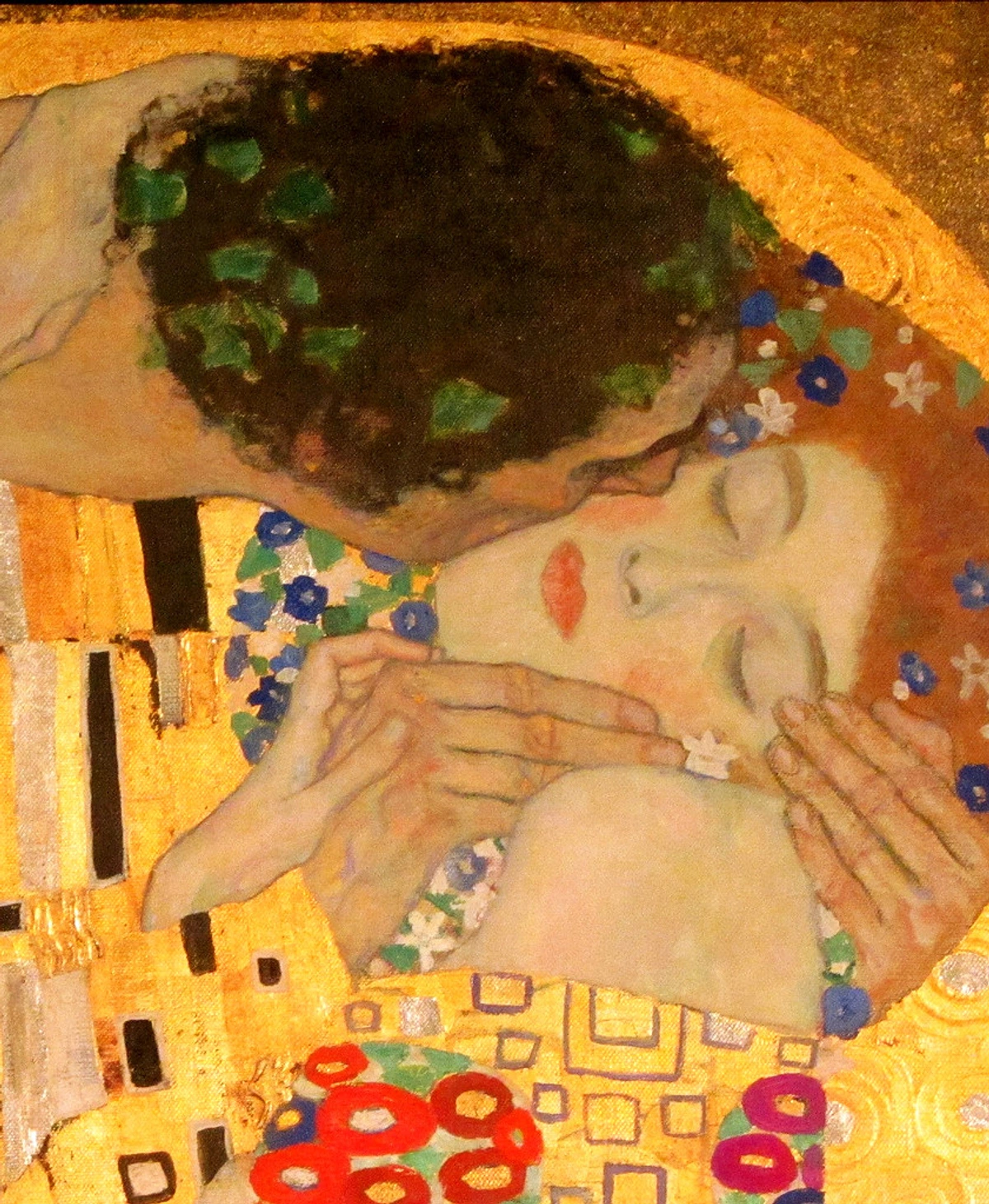
Element | Male Figure Patterns | Female Figure Patterns | Broader Symbolism |
|---|---|---|---|
| Shape | Strong, rectangular blocks | Soft, circular, flowing forms | Rectangles often symbolize stability, earthiness, rationality, and structure, aligning with traditional masculine archetypes. They can represent the grounded, protective, or even the rigid societal frameworks of the era. Circles, conversely, evoke eternity, femininity, fertility, and the organic cycles of nature. They connect to the cosmos, the feminine divine, and cyclical time, representing an intuitive, flowing energy often associated with the feminine. |
| Placement | Dominant, assertive | Interspersed, yielding | The man's robust, almost armor-like patterned robe suggests a protective, enveloping presence, rooted in earthly strength, while the woman's scattered, delicate motifs imply a receptive, flowing nature, yet her presence is no less central to the composition. |
| Symbolism | Masculinity, strength, order | Femininity, embrace, nature, intuition | Beyond gender, the interplay between geometric and organic forms speaks to a broader philosophical concept of universal harmony—the union of structured thought with intuitive feeling, of the earthly with the spiritual, of order and chaos, culture and nature. It’s a visual dialogue, a complex synthesis often explored within the symbolism movement: mystical poetic art. You can explore this even further in the symbolism of geometric shapes in abstract art: a deeper look. |
This isn't just decorative; it's profoundly symbolic. The man's robe is adorned with bold, black and grey rectangles, suggesting strength, structure, and perhaps the earthly, grounded aspect of masculinity. The woman's dress, however, blossoms with soft, swirling circles and floral motifs – I can make out hints of orange, purple, and green, suggesting specific flowers like violets or poppies, traditionally associated with love, beauty, or even sleep and death. These motifs represent femininity, fertility, and the organic beauty of nature. The vibrant orange and red flowers at her feet further emphasize this connection to life and growth. What truly captivates me is how these seemingly disparate patterns don't clash but rather interact and flow into each other, mirroring the profound unity of their embrace. How do these contrasting yet complementary patterns speak to your own understanding of partnership and connection?
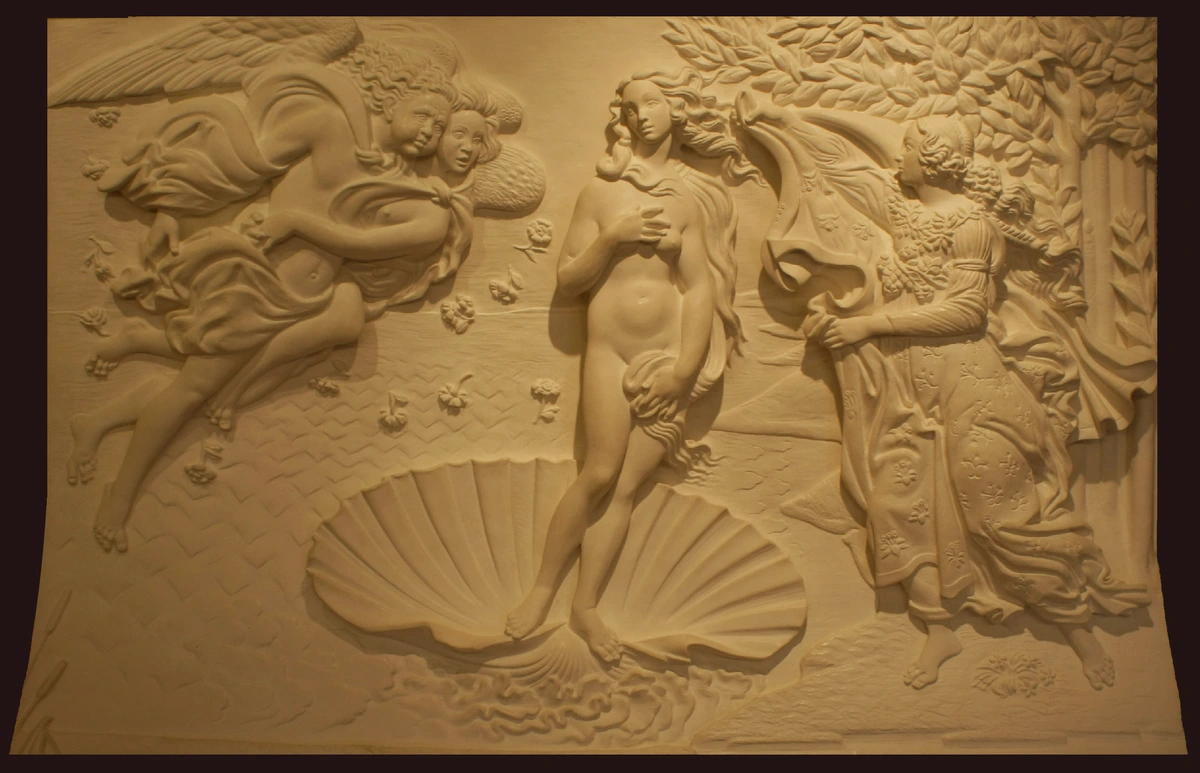
Yet, despite these differences, the patterns are integrated, flowing into each other, mirroring their embrace. His hand gently cups her face, a gesture of adoration and possessiveness, while her closed eyes suggest a surrender to the moment, a profound trust in the embrace. It's a posture that speaks volumes, even in its quietude. It's a beautiful way to express the idea of two becoming one, don't you think? It's like a visual representation of how disparate elements can find profound unity, much like the unexpected connections I sometimes find between colors in my own abstract art.
The Landscape of Love: Standing on the Brink
They're not just floating in space; they're on a small, flower-dotted patch of ground, precariously close to an abyss. This detail has always caught my attention. It suggests fragility, the idea that this moment of perfect love, this golden bubble, exists on the edge of uncertainty or the vast unknown. In the context of turn-of-the-century Vienna, this could also allude to the precariousness of societal norms, the anxieties of a changing world, or even the fragility of life and mortality itself. Think of the political instability of the declining Austro-Hungarian Empire, grappling with nationalist movements and the shadow of impending conflict (like WWI), or the social shifts brought by rapid industrialization and the questioning of traditional values that defined that fin-de-siècle era. These underlying anxieties imbue the scene with a poignant, bittersweet reality, reflecting a collective unease beneath Vienna's glittering surface. Sometimes, I think the most beautiful things are found right on the edge of the unexpected. It's a poignant touch, reminding us that even the most profound connections exist within a larger, sometimes challenging, world.

The Power of Gold: More Than Just a Pretty Shine
And then there’s the gold. Oh, the gold! It absolutely dominates the canvas. Klimt wasn't just throwing gold around because it looked pretty (though it certainly does!). The extensive use of genuine gold leaf elevates the figures from mere mortals to almost divine beings, placing them in a sacred, timeless space. It's applied with remarkable technical precision, often burnished to different lusters or combined with paint to create a rich, varied texture that makes the surface itself shimmer and shift with the light, creating a dynamic surface that seems to live and breathe, responding to the ambient light.
I remember learning about how ancient cultures, like the Byzantines and Egyptians, used gold in religious icons to symbolize divinity, eternity, and spiritual transcendence. They would use solid gold backgrounds, for instance, to create a celestial, otherworldly effect, detaching the figures from earthly concerns and placing them in a sacred realm. Klimt, a modern artist in a secularizing age, adopted this ancient technique to imbue his secular subject with similar spiritual weight, but with a revolutionary twist. He didn't just copy; he modernized it, applying it to intimate human connection rather than purely religious figures. This made a powerful statement about the profound, almost sacred, nature of human love in an era questioning traditional faith. It makes the embrace feel universal, transcendent, almost a religious experience of love. It’s a brilliant way he found to make a statement about the profound nature of human emotion, one that deeply resonates with me. As an artist, I often find myself striving for this same kind of transformative impact, pushing materials to convey something beyond their physical form.

The Many Faces of Love: Interpretations and Theories
With the technical brilliance of "The Kiss" laid bare, we can now turn to the endlessly fascinating realm of its meaning, and how viewers have interpreted this iconic embrace over the decades. Over the years, The Kiss has been interpreted in countless ways, and honestly, that’s part of its magic. No single answer, just a rich tapestry of possibilities. Trying to decipher all the layers can feel like an art project in itself – one I'm happily undertaking, though I suspect Klimt might chuckle at my earnest attempts to pin down every single meaning! Here are a few interpretations I've pondered, alongside some widely discussed theories:
- Erotic Love and Sensuality: For many, the painting is an expression of pure, unbridled passion and eroticism. The man's strong grip, the woman's passive yet receptive posture, the hidden faces – it all speaks to a powerful, intimate moment. It captures a deep, sensual connection.
- Spiritual Union and Transcendence: Beyond the physical, the golden aura and almost ethereal setting suggest a deeper, spiritual connection, a merging of souls rather than just bodies. It's about transcendence through love, a moment of perfect unity removed from the mundane world, an escape into a shared, sacred space.
- Universal Love and Reconciliation: In a broader sense, it can be seen as an allegory for universal love, overcoming conflict and achieving harmony. This was a common theme in Symbolist art, often reflecting a yearning for deeper truths in an increasingly fragmented world, or a hope for reconciliation in an era of growing tensions.
- Autobiographical Insight: As mentioned, many see Klimt and Flöge in the painting, making it a deeply personal testament to their own complex, enduring relationship, perhaps capturing a moment of ideal intimacy they shared or aspired to. The complex nature of their bond—partially professional, deeply personal, perhaps platonic, yet intensely close—adds a layer of autobiographical intrigue.
- The Power Dynamic of Relationships: This is a particularly rich area for discussion. Some feminist art historians, for instance, have critiqued the passive depiction of the female figure, seeing her as subsumed by the male, reflective of traditional gender roles of the era. Her kneeling position and closed eyes could imply a loss of individual agency, or even a symbolic representation of woman as object rather than subject. However, other interpretations suggest agency in her serene expression or the delicate positioning of her hands, presenting a more nuanced view of the 'kiss' as a consensual and mutual act, even within an unequal societal framework. Her posture could also be read as a willing surrender to the profound moment, a testament to deep trust and emotional intimacy rather than subjugation. Psychoanalytic readings might explore the subconscious desires and projections within the embrace, while mystical interpretations could see it as a union of opposing cosmic forces. These discussions spark important conversations about gender roles, agency, and societal expectations within the context of early 20th-century societal norms. Furthermore, the concept of Gesamtkunstwerk suggests Klimt sought to integrate all aspects of human experience, including the complexities of relationships and power dynamics, into his "total work of art."
- The Lack of Overt Narrative: Interestingly, the painting deliberately avoids a clear story or specific event, which in itself is symbolic. This ambiguity allows for a universal interpretation, inviting viewers to project their own experiences and emotions onto the scene, making it timeless and endlessly relatable. This is why it resonates with so many.
My take? I think it’s a beautiful synthesis of all these things. Klimt managed to capture the multifaceted nature of love – its earthly passion, its spiritual depth, its fragile beauty, and its profound universality – all in one glorious, golden package. Ultimately, what I find most profound about 'The Kiss' is its capacity to hold all these meanings simultaneously. It’s a painting that doesn’t dictate, but invites, allowing each viewer to find their own personal truth within its golden embrace. This is the kind of resonant complexity I aim for in my own artistic expressions. It's why it resonates so deeply with so many people, including me. It's a reminder that art isn't about giving easy answers, but about sparking endless questions and personal connections. This intricate interplay of meaning is, I believe, what makes it a truly iconic work of art. How does the ambiguity of their identities enhance, rather than detract from, the painting's emotional impact for you? Does knowing the potential identities of the lovers change how you feel about the painting, or do you prefer the universal archetype?
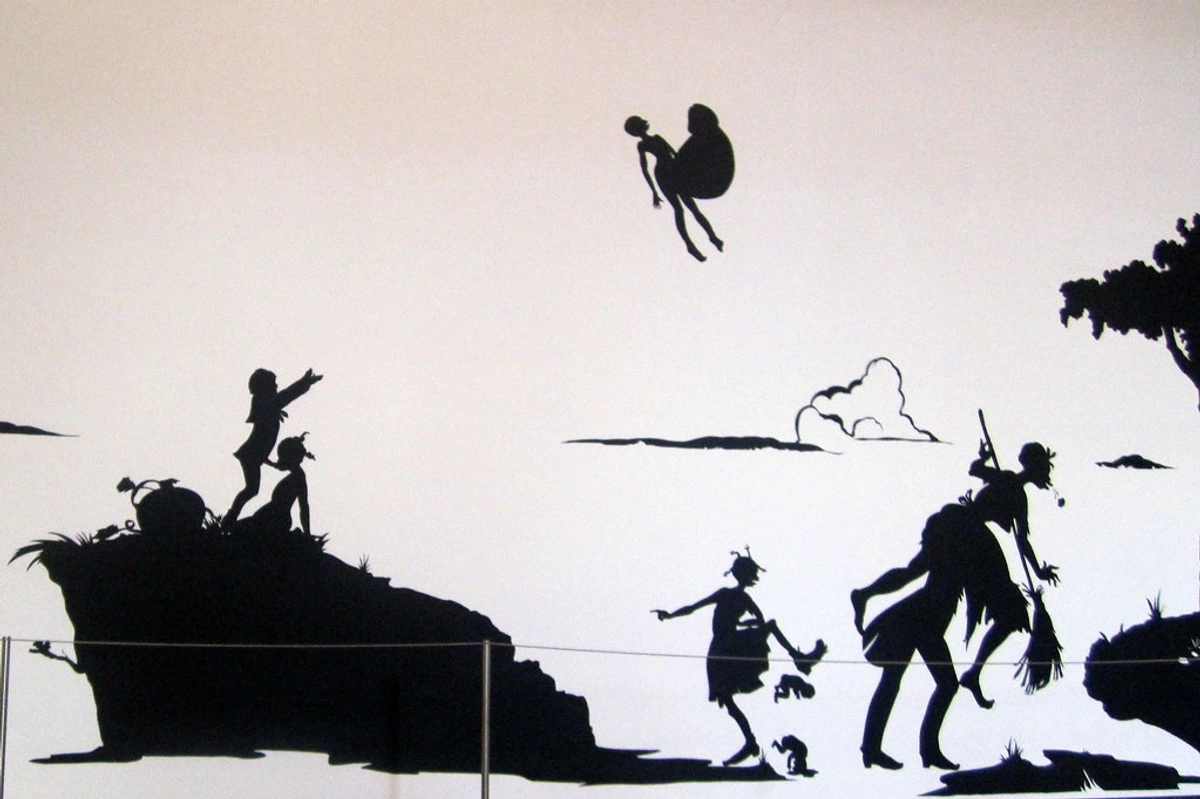
Beyond the Canvas: The Enduring Legacy of The Kiss
Gustav Klimt's "The Kiss" isn't just a masterpiece of Art Nouveau; it's a global icon, instantly recognizable and deeply ingrained in popular culture. Its imagery graces everything from posters and postcards to fashion and home decor, becoming synonymous with romantic love and artistic opulence. This widespread reproduction, while sometimes reducing its complexity, undeniably speaks to its universal appeal and its ability to transcend the art world and touch the hearts of millions. For instance, its golden, decorative elements have inspired fashion lines and graced movie sets, making its aesthetic instantly recognizable even outside traditional art circles.
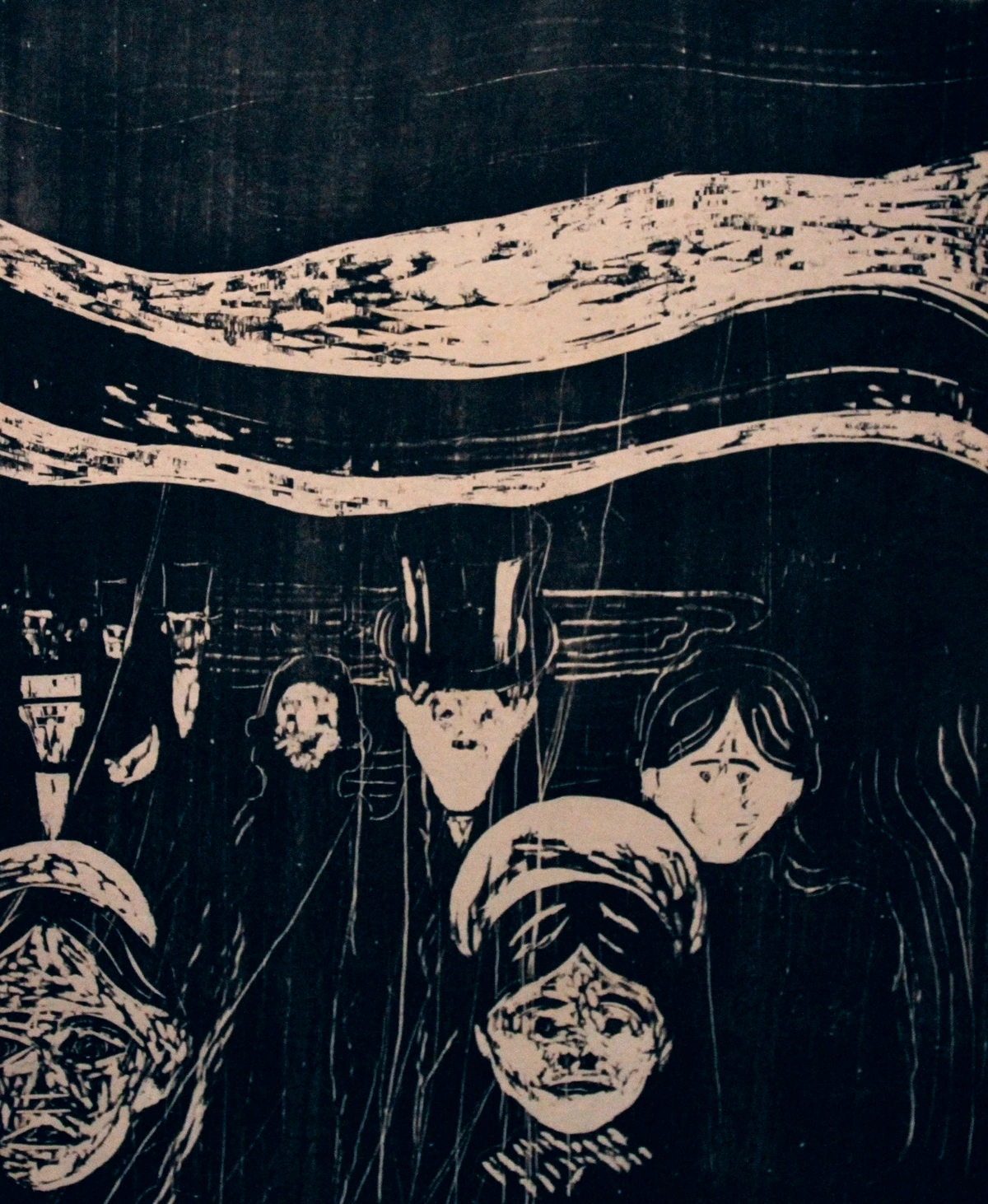
Its legacy also extends deep into the art historical canon, cementing Klimt's place as a pioneer of modern art. He didn't just paint pictures; he crafted immersive experiences that challenged conventions and paved the way for future artistic explorations. His bold flattening of form, integration of patterns, and symbolic use of color and gold influenced subsequent decorative arts movements like Art Deco. Art Deco, known for its geometric shapes, rich colors, and lavish ornamentation, directly drew inspiration from Klimt's stylized forms and luxurious materiality; one can see echoes in the geometric motifs of Lalique glass, the opulent interiors of 1920s skyscrapers, or the intricate textile designs of the era. His influence can also be traced to later Symbolist artists who sought to convey abstract ideas and emotions through highly personal, evocative imagery. "The Kiss" continues to inspire artists, designers, and thinkers, proof that true genius has a ripple effect across generations. For an artist like myself, it's a powerful reminder of art's potential to communicate profound truths without words, inspiring me as I explore emotional depth in my own work. You can discover more about this impactful era in the ultimate guide to art deco movement.
Beyond just fine art, Klimt's decorative style profoundly influenced architectural ornamentation and interior design of the Art Nouveau and Art Deco periods. His intricate patterns and use of luxurious materials translated into decorative motifs on buildings, furniture design, and even everyday objects, making art an integral part of life itself – a true realization of the Gesamtkunstwerk ideal within design.
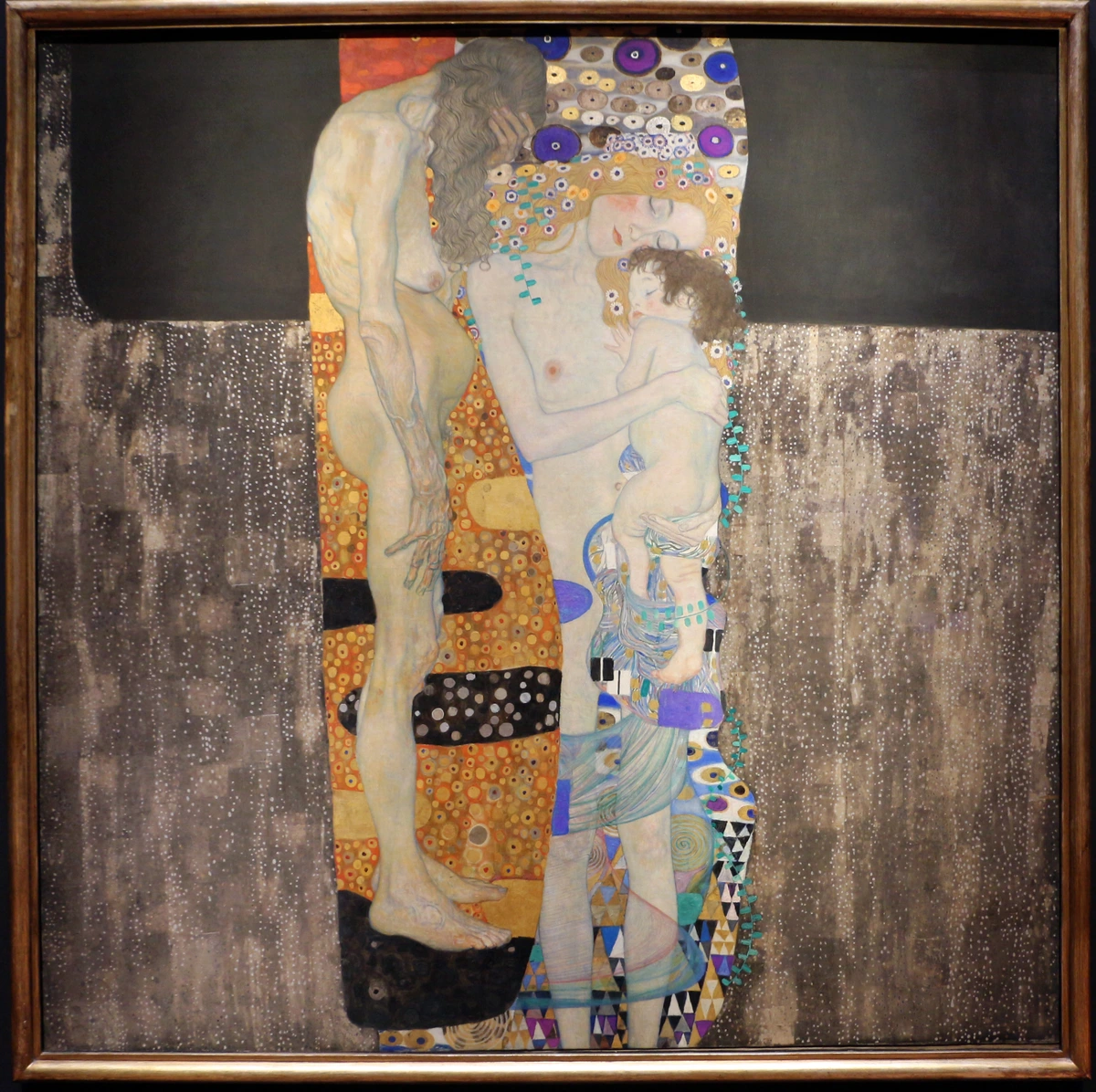
credit, licence
Why "The Kiss" Still Captivates Us Today: An Artist's Perspective
So, after all this exploration, why does "The Kiss" remain such an enduring icon? I think it boils down to a few things, a powerful cocktail of elements that just works and makes it endlessly accessible to diverse audiences:
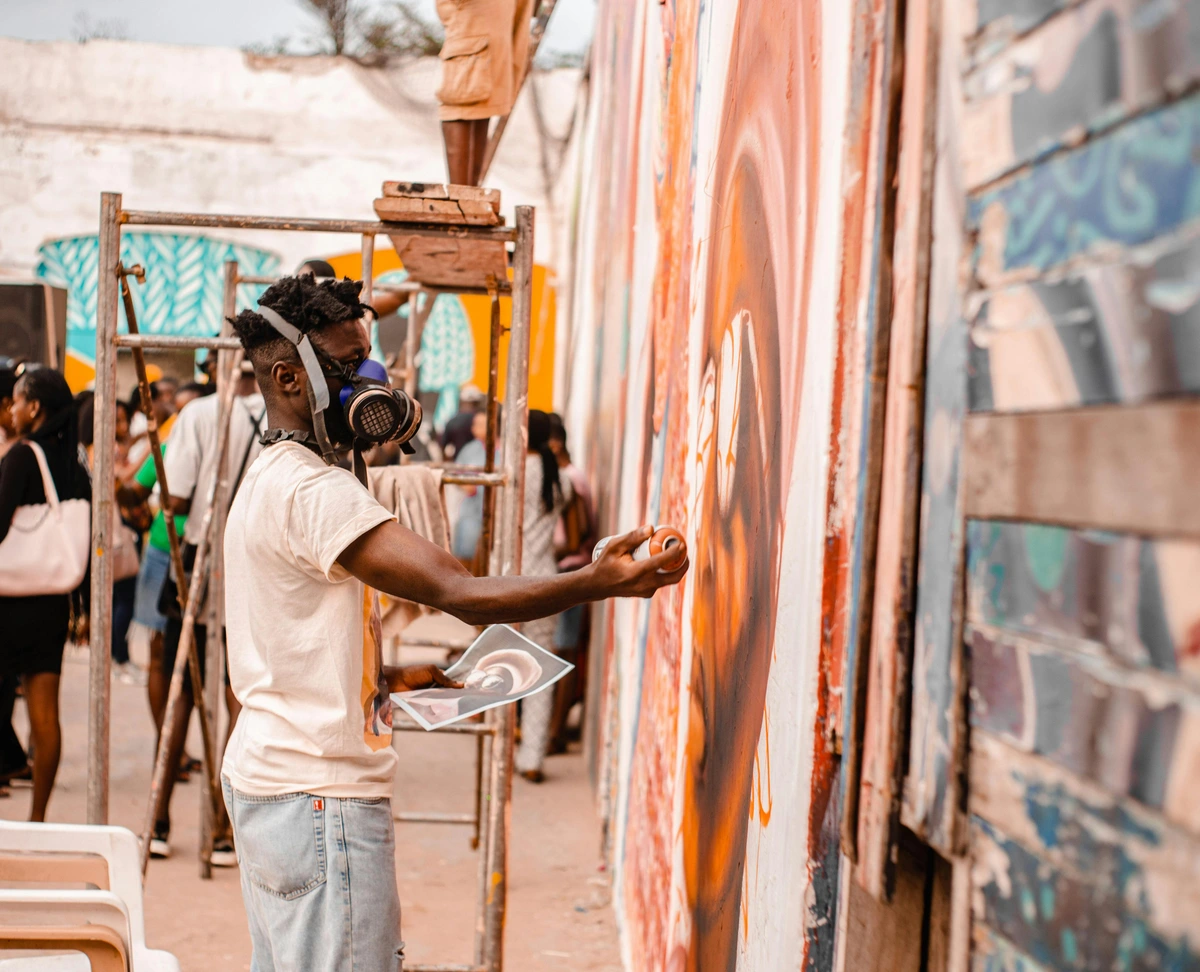
- Universal Theme, Timeless Emotion: Love, passion, and human connection are fundamental to the human experience. This painting taps into these core emotions in a way that transcends culture and time, making it eternally relatable. The tender embrace, the protective stance of the man, and the receptive posture of the woman all contribute to a visual language that directly communicates these universal feelings, allowing us to see a piece of ourselves in this golden union. It speaks to our deepest longings for connection and belonging. It's a feeling I try to capture in my own work: that spark of connection.
- Visual Opulence & Innovation: Let's be honest, the gold is just stunning. It literally shines, drawing your eye and holding it. But beyond the shine, Klimt's innovative fusion of two-dimensional pattern and three-dimensional form was revolutionary, a sensory feast that delights both the eye and the intellect. The contrast between the shimmering, multifaceted gold and the muted, earthy tones of the background, along with the intricate patterns that almost give a tactile feel to the surface, creates a dynamic visual experience. It's visually arresting, making it immediately appealing even to those new to art.
- Symbolic Depth & Mystery: It's not just a pretty picture; it's a rich tapestry of symbols that invites contemplation. The more you look, the more layers you discover, the more questions arise, making it endlessly engaging and personally resonant. The juxtaposition of geometric (masculine) and organic (feminine) forms, for example, can be seen as a representation of the union of mind and body, or reason and emotion. What do these specific juxtapositions mean to you? It encourages a dialogue between the viewer and the artwork, inviting personal interpretation.
- Artistic Legacy & Pioneering Spirit: Klimt was a master of his craft and a pioneer of a new artistic era. He boldly departed from traditional academic art, paving the way for modernism. "The Kiss" stands as a testament to his genius and the rebellious spirit of the Art Nouveau and Vienna Secession movements. Its technical brilliance and symbolic richness secure its place as a pivotal work in art history.
It’s a painting that speaks to the heart and the mind, a perfect blend of decorative beauty and profound meaning. If you're inspired by how artists convey such deep emotions, perhaps you'd like to explore how translating emotion into abstract art: my process of visual expression works, it's a very different approach but equally heartfelt.
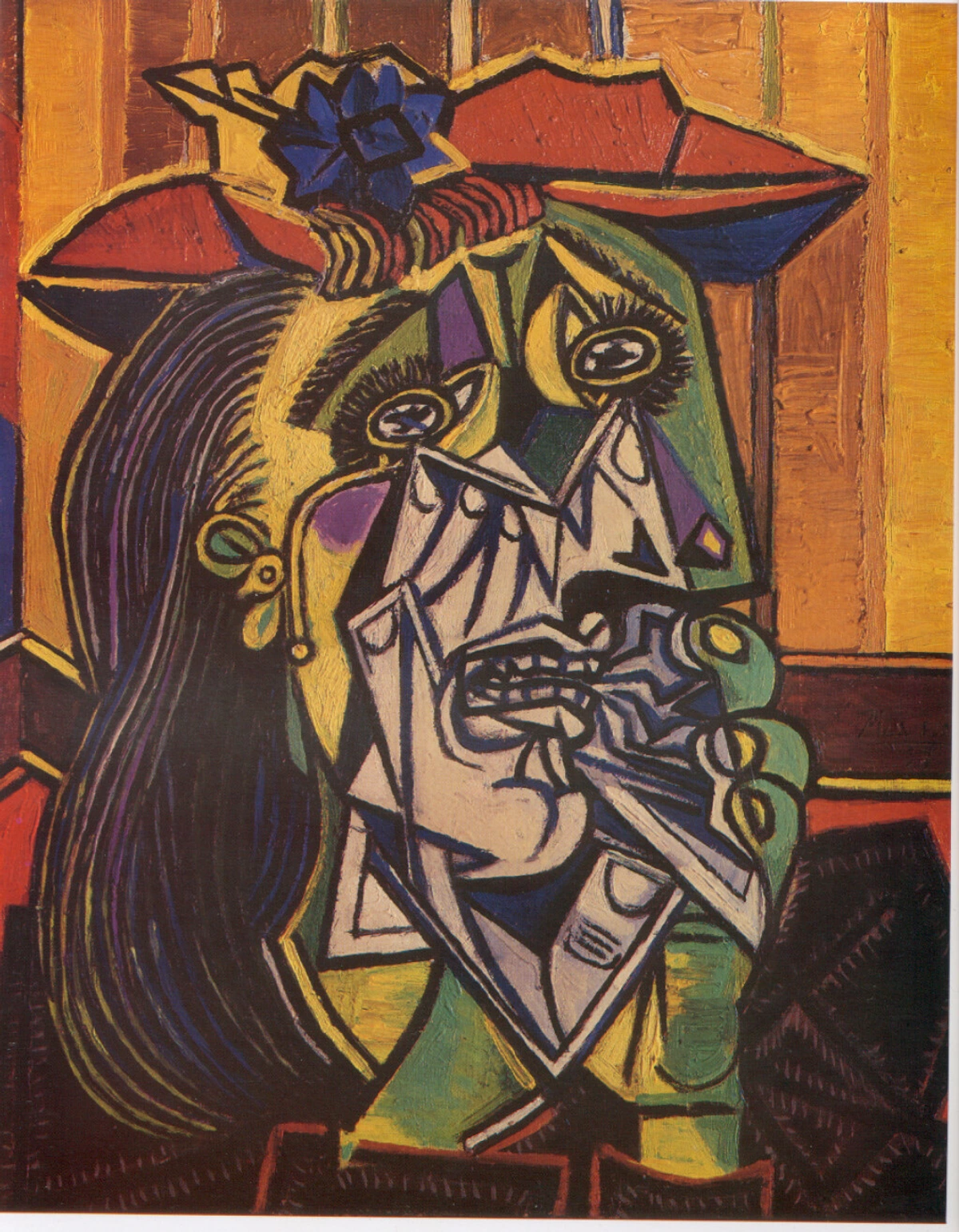
Did You Know? Intriguing Tidbits About The Kiss
Here are a few lesser-known, fascinating facts that add even more sparkle to this golden masterpiece:
- The "Golden Aphrodisiac": When The Kiss debuted, its overt sensuality combined with its luxurious gold earned it the nickname "the golden aphrodisiac" from some contemporary critics – a testament to its immediate and powerful impact on audiences. Imagine such a scandalous title being bestowed upon your work!
- Byzantine Inspiration Trip: Klimt's intensive use of gold leaf in his Golden Phase is widely believed to have been inspired by a trip he took to Ravenna, Italy, in 1903. There, he was deeply impressed by the breathtaking golden mosaics of the Byzantine churches, particularly their flat, shimmering backgrounds that imbued religious figures with an ethereal glow. It's a clear example of how ancient art can spark revolutionary modern expression. This journey fundamentally shifted his artistic trajectory, demonstrating how external inspiration can truly transform an artist's vision – a feeling I can certainly relate to after a particularly inspiring visit to a new museum.
- Klimt's Protective Mother: According to anecdotal accounts, Klimt's mother, Anna Klimt, was so protective of her son's work that she would sometimes stand guard over his studio, particularly when controversial pieces were being created. Imagine her reaction to the initial public outcry over The Kiss! She was likely his fiercest defender.
- A National Treasure, Priceless Today: Despite initial mixed reviews, The Kiss was purchased by the Austrian Ministry of Culture and Education even before the Kunstschau exhibition closed in 1908. They paid 25,000 crowns, a truly unprecedented sum for the time, equivalent to a small fortune today. This immediate recognition, despite the controversy, underlines its profound perceived significance. Today, the painting is considered priceless, anchoring the Belvedere Museum's collection as one of Austria's most cherished national treasures.
- Ubiquitous in Pop Culture: Beyond its museum walls, The Kiss has become an inescapable image in popular culture. Its iconic status has led to countless reproductions on everything from coffee mugs and phone cases to high fashion garments and album covers. It's even been parodied in cartoons and advertisements, cementing its place as a truly global artistic phenomenon.
- The Belvedere Experience: If you plan to see The Kiss in person at the Österreichische Galerie Belvedere in Vienna, try to visit during off-peak hours (early morning or late afternoon) to fully appreciate its shimmering details without the crowds. Stand back initially to take in its grandeur, then move closer to observe the intricate textures of the gold leaf and the nuanced expressions of the lovers' faces and hands. It’s an experience that truly needs time and space.
Frequently Asked Questions about The Kiss
I get a lot of questions about this painting, and it's always fun to share what I know. Here are some of the common ones, with even more depth:
- What art movement does The Kiss belong to?This is perhaps the most frequent question we get about 'The Kiss.' The Kiss is a quintessential example of Art Nouveau, specifically the Vienna Secession style, a movement Klimt co-founded. It also falls under the broader umbrella of Symbolism, as it uses rich imagery, decorative elements, and allegory to convey deeper, often abstract, ideas and emotions rather than pure realism. You can explore more about this fascinating period in this art nouveau movement or delve deeper into the philosophical underpinnings of the definitive guide to understanding symbolism in art.
- What is Klimt's 'Golden Phase' and why is The Kiss its most famous example?Klimt's Golden Phase, spanning roughly from 1903 to 1909, is the most celebrated period of his career, marked by his opulent and extensive use of gold leaf in his paintings. This technique was inspired by Byzantine mosaics and ancient Egyptian art, allowing him to create works of unprecedented luminosity and spiritual depth. The Kiss is considered the crowning achievement of this phase because it perfectly synthesizes all its characteristic elements: the dominant gold, intricate decorative patterns, the blurring of figure and background, and a profound symbolic exploration of human emotion and connection. Its sheer scale, technical mastery, and universal theme make it the iconic masterpiece that defines this radiant period in Klimt's artistic journey. It encapsulates the very essence of the Golden Phase's alchemical blend of the sacred and the sensual.
- Is The Kiss by Klimt truly made with gold?Absolutely! This is one of the painting's most striking features. Klimt incorporated real gold leaf into The Kiss, especially during his Golden Phase. This technique, inspired by Byzantine mosaics, gives the painting its incredible luminosity and opulence. It's not just yellow paint; it's actual precious metal, applied with meticulous care using specialized adhesives and burnishing tools, which adds so much to its aura and its symbolic weight, elevating the scene to something almost divine. As an artist, I can tell you there's a unique challenge and immense satisfaction in working with such precious materials, witnessing them transform a canvas. It feels like a collaboration with history, bringing ancient techniques into a modern vision.
- Where can I see The Kiss today?A question that often arises when people see this masterpiece. This iconic masterpiece is permanently housed at the Österreichische Galerie Belvedere (Belvedere Museum) in Vienna, Austria. If you ever get the chance to visit, I highly recommend seeing it in person; its true grandeur, shimmering details, and the way the gold catches the light are truly best appreciated live. The way the light plays off the gold... it's an experience that stays with you, much like the feeling I hope my own art evokes. Be sure to book your tickets in advance, as it's one of Vienna's most popular attractions! It's an experience you won't soon forget. When I visit a museum, I always try to find a quiet moment with a favorite piece, and for The Kiss, that really makes all the difference.
- What are the main symbols in The Kiss?The painting is exceptionally rich with symbolism, making it endlessly fascinating! Key elements include:
- Gold Leaf: Symbolizing divinity, eternity, opulence, and the sacred nature of the lovers' embrace. It elevates the moment beyond the mundane, creating an otherworldly glow.
- Geometric Patterns (male): Representing masculinity, strength, order, and the earthly or rational aspect. The bold rectangles suggest stability and a protective presence, perhaps even the societal structures of the era.
- Circular/Floral Patterns (female): Symbolizing femininity, fertility, nature, rebirth, and the organic beauty of life. The swirling circles evoke endlessness, the life cycle, and a connection to the cosmos. Specific floral motifs (like poppies or violets) can further symbolize love, beauty, or even transience.
- Flower-strewn Ground/Cliff Edge: This precarious setting is highly symbolic, suggesting the fragility and fleeting nature of perfect love, existing on the brink of the unknown, mortality, or the societal anxieties of the fin-de-siècle. It hints at a paradise that is both beautiful and vulnerable.
- Embrace: The ultimate symbol of love, union, transcendence, and the merging of two souls into one harmonious entity. It can also be interpreted as a sanctuary, an escape from the harsh realities of the world, or even an existential fusion that blurs individual identities.
- Color Palette (subtleties): While gold dominates, the subtle greens and blues in the background, and the vibrant floral accents, hint at nature, vitality, and perhaps a fleeting paradise, grounding the ethereal figures.
- Lack of Overt Narrative: The deliberate absence of a specific story allows the painting to become a universal allegory of love, allowing viewers to project their own experiences and emotions onto the timeless scene, making it deeply personal.
- How does The Kiss relate to other works by Klimt?The Kiss is a pinnacle of Klimt's Golden Phase, a period where he extensively used gold leaf and intricate patterning. It shares stylistic and thematic elements with other famous Golden Phase works like the Portrait of Adele Bloch-Bauer I and The Three Ages of Woman. While The Kiss embodies tender intimacy and a harmonious union, other works from his Golden Phase, like the more assertive and empowering Judith I, reveal a different facet of Klimt's exploration of sensuality and power, showcasing the breadth of his artistic vision. To understand his full artistic evolution, it’s worth noting that Klimt began in a more academic, realist style, creating grand murals for public buildings. However, he gradually evolved, embracing Symbolism and the decorative arts, leading to his Golden Phase and later, more expressive and abstract works, showcasing a profound journey from tradition to radical modernism. If you're interested in learning more about his full body of work, I have an ultimate guide to Gustav Klimt that might just be perfect for you!
- What was the initial public and critical reception of The Kiss?When The Kiss was first exhibited at the 1908 Kunstschau in Vienna, it garnered immediate attention, polarizing audiences and critics. While some were captivated by its breathtaking beauty, spiritual intensity, and innovative use of gold, others found it too decorative, overly sensual, or even vulgar, challenging the conservative artistic sensibilities of the time. Despite the controversy and mixed reviews, its powerful impact was undeniable, and it was purchased by the Austrian state for the Belvedere Museum even before the exhibition closed, for an unprecedented sum. This immediate acquisition, despite the mixed reviews, speaks volumes about its perceived significance right from the start, a true testament to its artistic power and the keen eye of its early champions.
- What technical aspects, beyond gold leaf, define The Kiss?Beyond the striking use of gold leaf, Klimt's technical prowess in The Kiss is evident in his masterful composition and innovative material use. He employs a flat, two-dimensional decorative background that pushes the figures forward, almost like a Byzantine icon. His intricate line work defines the contours of the figures and their patterns, showcasing his precise draftsmanship. The subtle color palette in the background (greens, blues) contrasts with the vibrancy of the floral elements and the lovers' golden robes. The blurring of the lines between the figures and their ornate clothing, making them almost one with the decorative elements, is a signature technique that enhances the painting's symbolic meaning of unity and transcendence. Moreover, Klimt combined gold leaf with oil paints, silver, and platinum dust, creating varied lusters and textures that make the surface itself a dynamic, shimmering experience, shifting with every change in light. It's a technical ballet of materials that makes the painting an enduring marvel. I find myself constantly analyzing how he achieved such depth and texture with such diverse materials; it’s a masterclass in mixed media, something I explore in my own way in the studio.
Conclusion: My Final Thoughts on a Golden Masterpiece
Gustav Klimt's "The Kiss" is, in my eyes, more than just a painting; it's a monument to the human experience of love, rendered in breathtaking gold and profound symbolism. It’s a testament to the power of art to transcend time, to communicate universal truths without needing a single, definitive answer. Its beauty lies not just in its visual splendor, but in its ability to spark conversation, to evoke emotion, and to remind us of the precious, often fragile, nature of connection. It's an artwork that truly invites a dialogue between the viewer and the canvas, asking us to bring our own experiences and questions to its golden embrace. It's in this space of shared human experience that 'The Kiss' truly finds its voice, offering a moment of reflection on the profound mysteries of love and connection, and indeed, on the very nature of human existence in the 21st century.
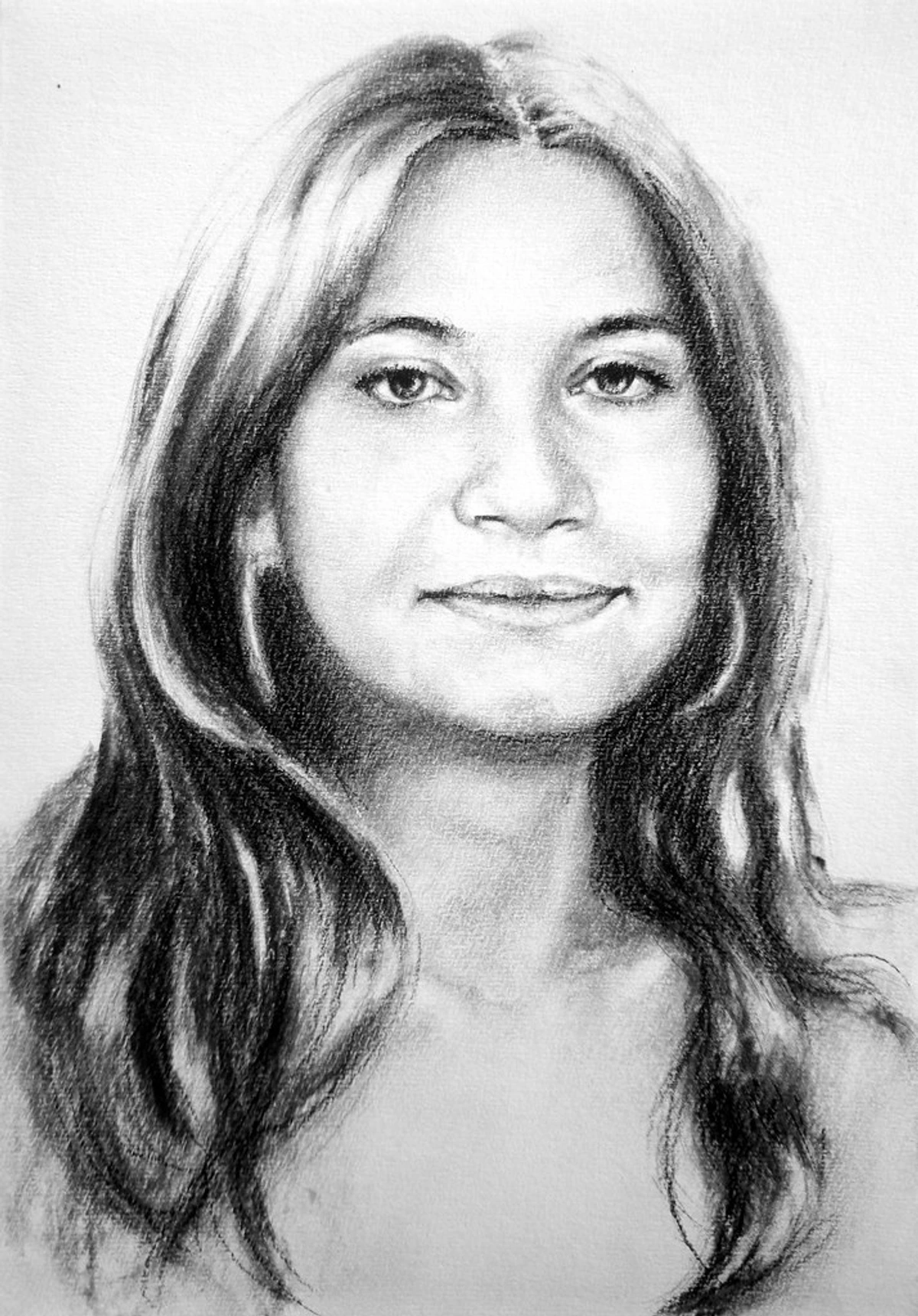
For me, it’s a constant source of inspiration, a reminder that art can be both intensely decorative and profoundly meaningful. The way Klimt layered gold to create depth and evoke emotion, fusing the sacred with the sensual, is something I constantly think about. In my own abstract paintings, I strive for a similar alchemy, exploring how colors can interact and layer to create a sense of glowing depth and convey complex emotions, much like how Klimt made his gold pulse with life. My aim, like Klimt's in 'The Kiss,' is to create art that resonates on multiple levels, sparking personal connections and offering a moment of visual and emotional contemplation. What feelings or questions does this golden embrace spark within you, and how might that connect to the vibrant explorations found in my art studio in Den Bosch? I'd genuinely love to know what resonates with you!

